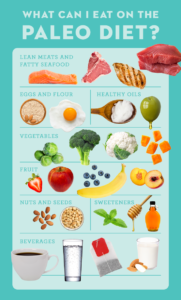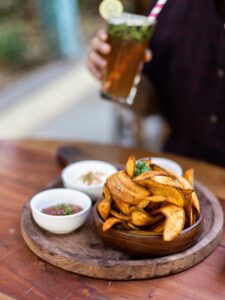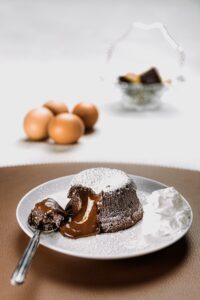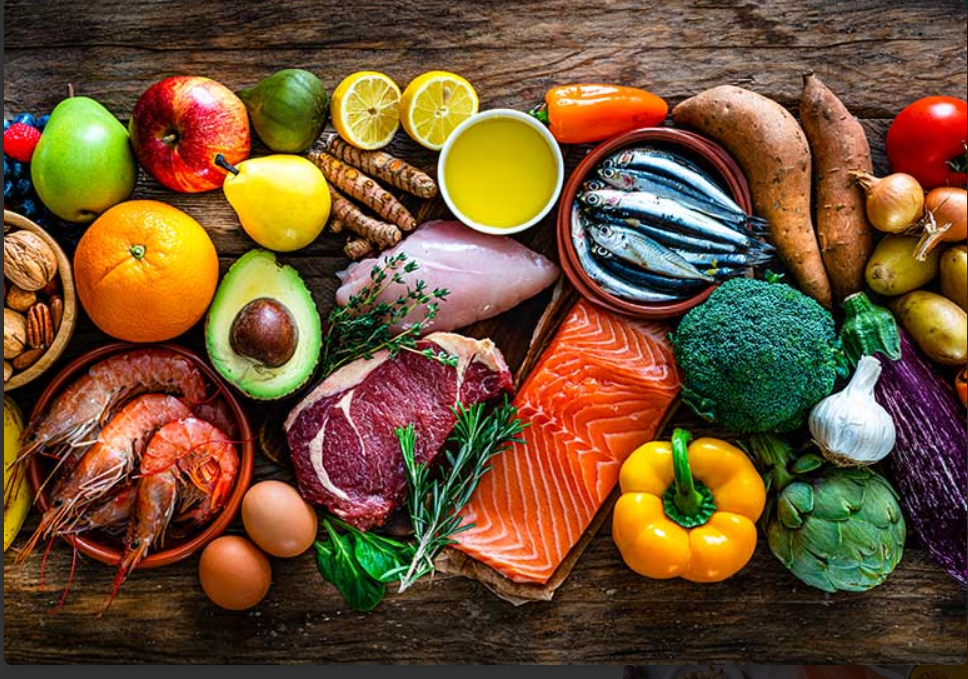Paleo Diet: What Is It and Is It Good for You?
The paleo diet, also known as the caveman diet, is a popular eating plan that mimics the diet of our ancestors in the Paleolithic era, before the advent of agriculture and processed foods. The idea is that by eating like hunter-gatherers, we can avoid many of the modern diseases and health problems that are linked to our current diet.
But what exactly does the paleo diet entail, and is it really beneficial for our health? In this post, we will explore the pros and cons of the paleo diet, and help you decide if it is right for you
What Can You Eat on the Paleo Diet?
The paleo diet is based on whole, natural foods that are presumed to be available to humans during the Paleolithic era. These include:
- – Meat, poultry, fish, and eggs
- – Fruits and vegetables
- – Nuts and seeds
- – Healthy oils, such as olive, coconut, or avocado oil

On the other hand, the paleo diet excludes any foods that are considered to be products of agriculture or modern processing. These include:
- – Grains, such as wheat, rice, oats, or corn
- – Legumes, such as beans, peas, lentils, or soy
- – Dairy products, such as milk, cheese, yogurt, or butter
- – Refined sugars and artificial sweeteners
- – Processed foods, such as chips, cookies, cakes, or candy
- – Alcohol and caffeinated drinks
What Are the Pros of the Paleo Diet?
The paleo diet has many potential benefits for our health and well-being. Some of the pros of the paleo diet are:
- – It is rich in protein and fiber, which can help you feel full and satisfied for longer.
- – It is low in carbohydrates and refined sugars, which can help you regulate your blood sugar levels and prevent insulin resistance.
- – It is high in healthy fats, which can help you lower your cholesterol levels and reduce inflammation.
- – It is abundant in antioxidants and phytochemicals, which can help you fight oxidative stress and prevent chronic diseases.
- – It is simple and easy to follow, as it does not require counting calories or measuring portions.
What Are the Cons of the Paleo Diet?
The paleo diet also has some drawbacks and limitations that you should be aware of. Some of the cons of the paleo diet are:
- – It can be expensive and impractical, as it requires buying organic and grass-fed meats, fresh fruits and vegetables, and specialty products.
- – It can be restrictive and boring, as it eliminates many foods that are commonly enjoyed and culturally significant.
- – It can be deficient in some nutrients, such as calcium, vitamin D, iodine, or B vitamins.
- – It can be harmful for some people with certain medical conditions or allergies.
Some commonly asked questions on "paleo diet" are:
What is the paleo diet and how does it work?
The paleo diet is a way of eating that mimics the foods that our hunter-gatherer ancestors ate before the advent of agriculture and processed foods. It works by providing the body with nutrient-dense foods that are high in protein, healthy fats, vitamins, minerals, and antioxidants, while avoiding foods that may cause inflammation, digestive problems, or chronic diseases. ¹²³
What are the benefits of the paleo diet?
- – The paleo diet may offer various benefits for health and well-being, such as:
- – Weight loss and improved body composition
- – Reduced risk of diabetes, cardiovascular disease, and cancer
- – Enhanced immune system and reduced allergies
- – Improved energy levels and mental clarity
- – Reduced inflammation and pain
- – Better sleep quality and mood
- – Improved skin, hair, and nails
What are the foods to eat and avoid on the paleo diet?

- – The foods to eat on the paleo diet are:
- – Meat, poultry, fish, and eggs from organic, grass-fed, free-range, or wild sources
- – Fresh fruits and vegetables, preferably organic and local
- – Nuts and seeds, preferably raw and unsalted
- – Healthy oils, such as olive, coconut, avocado, or macadamia
- – Herbs and spices, such as garlic, ginger, turmeric, cinnamon, etc.
- – The foods to avoid on the paleo diet are:
- – Grains, such as wheat, rice, corn, oats, barley, etc.
- – Legumes, such as beans, peas, lentils, soybeans, peanuts, etc.
- – Dairy products, such as milk, cheese, yogurt, butter, etc.
- – Refined sugars and artificial sweeteners
- – Processed foods and additives
- – Vegetable oils, such as canola, corn, soybean, sunflower, etc.
- – Alcohol and caffeine
How do I start the paleo diet?
- – To start the paleo diet, you may want to follow these steps:
- – Clean out your pantry and fridge of any non-paleo foods
- – Stock up on paleo-friendly foods from your grocery store or farmer’s market
- – Plan your meals ahead of time and cook in bulk
- – Find some paleo recipes online or in books that suit your taste and budget
- – Track your progress and results with a journal or an app
- – Join a paleo community online or offline for support and inspiration
paleo-friendly snacks
There are many paleo-friendly snacks that you can enjoy, whether you are at home or on the go. Some of the most popular and easy ones are:
Veggies with hummus: You can dip any fresh or cooked vegetables, such as carrots, celery, cucumber, broccoli, or cauliflower, into a creamy hummus made from chickpeas, tahini, lemon juice, garlic, and olive oil. This snack is rich in fiber, protein, healthy fats, and antioxidants.
Hard boiled eggs: Eggs are a great source of protein, healthy fats, and essential nutrients like choline and biotin. You can boil them ahead of time and store them in the fridge for a quick and satisfying snack. You can also spice them up with some salt, pepper, paprika, or mustard.
Fresh fruits: Fruits are nature’s candy, but they are also packed with vitamins, minerals, and phytochemicals that benefit your health. You can enjoy any fruit that you like, such as apples, bananas, oranges, berries, grapes, or melons. You can also make a fruit salad with some lemon juice and honey for extra flavor.
Nuts and seeds: Nuts and seeds are crunchy and delicious snacks that provide healthy fats, protein, fiber, and minerals. You can eat them raw or roasted, plain or seasoned. Some of the best nuts and seeds for the paleo diet are almonds, walnuts, cashews, pistachios, pecans, macadamia nuts, sunflower seeds, pumpkin seeds, chia seeds, and flax seeds.
Trail mix: Trail mix is a classic snack that combines nuts, seeds, dried fruits, and sometimes chocolate chips or other goodies. You can make your own trail mix by mixing your favorite ingredients in a large bowl or jar. Some of the best dried fruits for the paleo diet are raisins, cranberries, apricots, dates, figs, and prunes.
Jerky: Jerky is a high protein snack that is made from dried meat. You can find jerky made from grass-fed beef, turkey, chicken, pork, or even fish. You can also make your own jerky by marinating thin slices of meat in your favorite spices and herbs and dehydrating them in the oven or a dehydrator.
 Banana chips: Banana chips are crispy and sweet snacks that are made from sliced bananas that are baked or fried until golden and crunchy. You can make your own banana chips by slicing ripe bananas thinly and baking them in the oven at a low temperature for about an hour. You can also sprinkle some cinnamon or coconut sugar on top for extra flavor.
Banana chips: Banana chips are crispy and sweet snacks that are made from sliced bananas that are baked or fried until golden and crunchy. You can make your own banana chips by slicing ripe bananas thinly and baking them in the oven at a low temperature for about an hour. You can also sprinkle some cinnamon or coconut sugar on top for extra flavor.
Chia seeds: Chia seeds are tiny seeds that have a lot of nutritional benefits. They are high in omega-3 fatty acids, fiber, protein, calcium, magnesium, and antioxidants. They also have the ability to absorb water and form a gel-like substance that can be used to make puddings or smoothies. To make chia pudding, simply mix some chia seeds with your favorite non-dairy milk and let it sit in the fridge for a few hours or overnight. You can then add some fruits, nuts, honey, or vanilla extract to enhance the taste.
paleo-friendly desserts
Chocolate pudding: This creamy and rich pudding is made with coconut milk, cacao powder, honey, and vanilla extract. It’s vegan, dairy-free, and refined sugar-free. You can top it with some whipped coconut cream, fresh berries, or chopped nuts for extra decadence.
Donuts with cashew cinnamon glaze: These perfectly spiced donuts are baked in the oven and topped with a delicious glaze made from cashew butter, maple syrup, and cinnamon. They are gluten-free, grain-free, and dairy-free. You can also add some chocolate chips or dried fruits to the batter for more flavor and texture.
Avocado key lime cheesecake: This light and refreshing cheesecake is made with a crust of almonds and dates, a filling of avocado, lime juice, honey, and coconut oil, and a topping of whipped coconut cream and lime zest. It’s raw, vegan, dairy-free, and refined sugar-free. You can also use lemon juice instead of lime juice for a different twist.
Almond flour apple crumble: This cozy and comforting dessert is perfect for the fall season. It’s made with sliced apples tossed with lemon juice, maple syrup, and cinnamon, and a crumble topping of almond flour, coconut oil, maple syrup, and chopped nuts. It’s gluten-free, grain-free, dairy-free, and refined sugar-free. You can serve it warm with some vanilla ice cream or whipped coconut cream.
Chocolate cake: This moist and fluffy cake is made with almond flour, cacao powder, eggs, honey, coconut oil, and baking soda. It’s gluten-free, grain-free, dairy-free, and refined sugar-free. You can frost it with some chocolate ganache made from coconut milk and dark chocolate chips or some whipped coconut cream and fresh berries.

These are just some of the many paleo-friendly desserts that you can try.
Conclusion
The paleo diet is a popular eating plan that claims to emulate the diet of our ancient ancestors. It has many potential benefits for our health and well-being, but it also has some drawbacks and limitations. Ultimately, the best diet for you is the one that suits your personal preferences, goals, needs, and lifestyle. Before starting any new diet, it is advisable to consult your doctor or a registered dietitian for guidance and advice.

